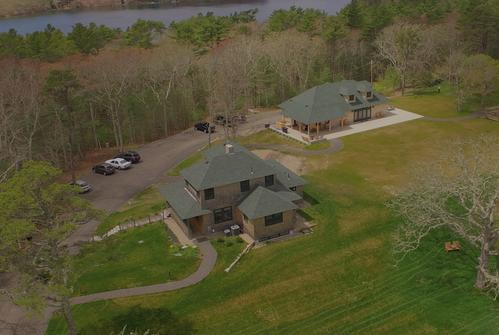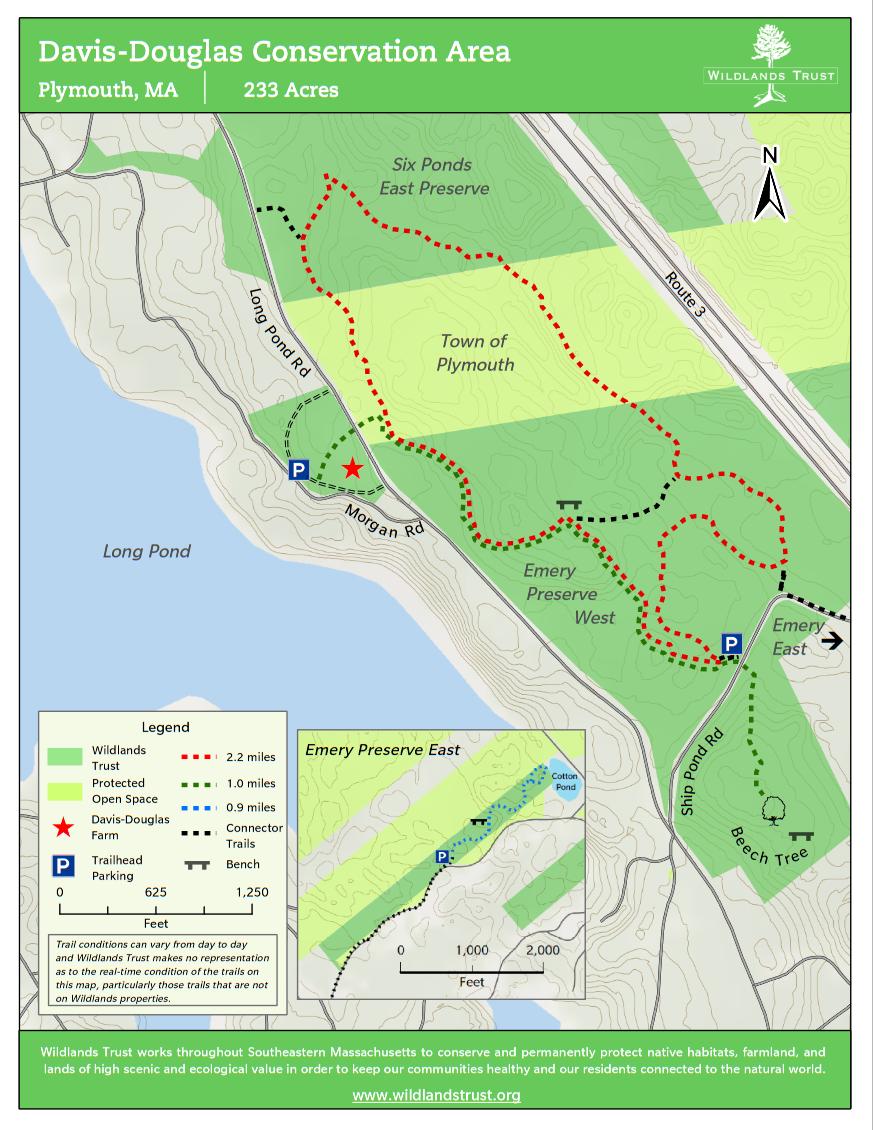Davis-Douglas Conservation Area & Wildlands Trust HQ

Davis-Douglas Conservation Area & Wildlands Trust HQ
Plymouth, Massachusetts 02360
Official WebsiteDavis-Douglas Conservation Area map
About this Location
Davis-Douglas Conservation Area comprises Six Ponds East Preserve, Emery Preserves East and West, Davis-Douglas Farm, and Town of Plymouth conservation land.
Six Ponds East Preserve is a critical link in an existing assemblage of conservation lands in the Six Ponds area. The ample forests on both sides of Long Pond Road and MA-3 are integral to the rural quality that still characterizes much of this area of Plymouth, affording hikers miles of old cart paths and woodland trails. These forests include high-quality pitch pine/scrub oak barrens, a hallmark natural community of the region. The Plymouth/Carver/Wareham barrens rank among the most biologically significant areas of the entire Eastern seaboard.
Emery Preserve West is located on a glacial upland just east of Long Pond and includes several forest types. This land is characterized by rolling topography and dry kettle holes. In the northern section, the trail passes through pitch pine and scrub oak, while along the road are more mature oak-pine woods. To the south, the land falls away into a fine grove of white pines in various stages of development. Forest floor plants range from delicate pink lady’s slippers, starflowers, and pyrolas to the grotesque cauliflower fungus. Occasionally, a Great Horned Owl is found in the tall white pines, while Black-capped Chickadees, Prairie Warblers, Eastern Towhees, Common Yellowthroats, Hermit Thrushes, Ovenbirds, and other species frequent the northern section. The southern part of the preserve may have once been the site of clay pits and a brick-making operation.
Emery Preserve East is a long, narrow strip of land roughly parallel to Ship Pond Road. Begin your walk here on a footpath from Ship Pond Road. Near its beginning, the path crosses a gradually revegetating former gravel pit and then enters the woods leading east toward Cotton Pond. After a short stretch, the path winds up a hill, part of the Ellisville Moraine, to the north. Some of the pitch pine and scrub oak vegetation to the north probably qualifies as pine barrens, but a scattering of red maple, gray birch, and aspen appears as the path makes a steep descent. After the trail climbs and falls again, Cotton Pond lies immediately ahead. In years when the water level is high, the edge of the pond floods the bushes, and no pond shore plants can be seen. In other years, a shrub layer of huckleberry appears in some places, while sweet pepperbush, noticeably fragrant in late July and early August, predominates in others. High-bush blueberry bushes are numerous on the shore, and inkberry, whose smooth green leaves lend life to the winter landscape, is also abundant.
Davis-Douglas Farm has been the Wildlands Trust headquarters since late 2014. A beloved scenic landmark along Long Pond Road, this small farm lies across the street from the 230 acres mentioned above of conservation lands. It is a center for connecting people to the land, providing a place for people to engage in conservation-related activities and programs, participate in community gardens, and easily access hundreds of acres of conservation land and trails in the Long Pond area.
Features
Restrooms on site
Wheelchair accessible trail
Entrance fee
Content from Official Website
Last updated March 27, 2024
